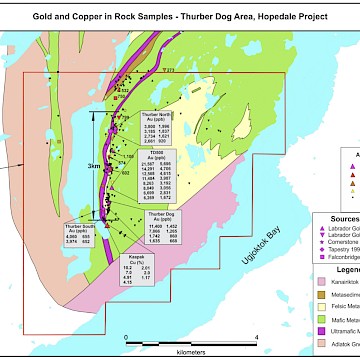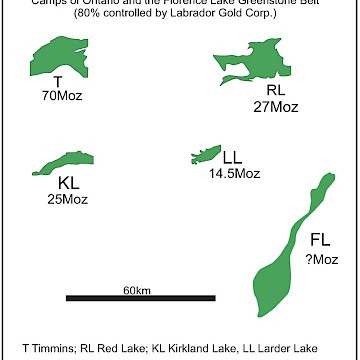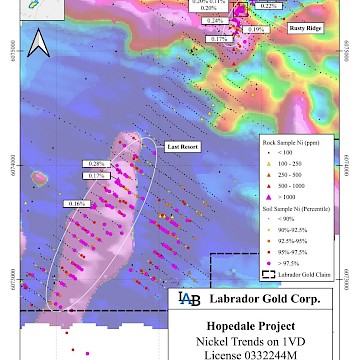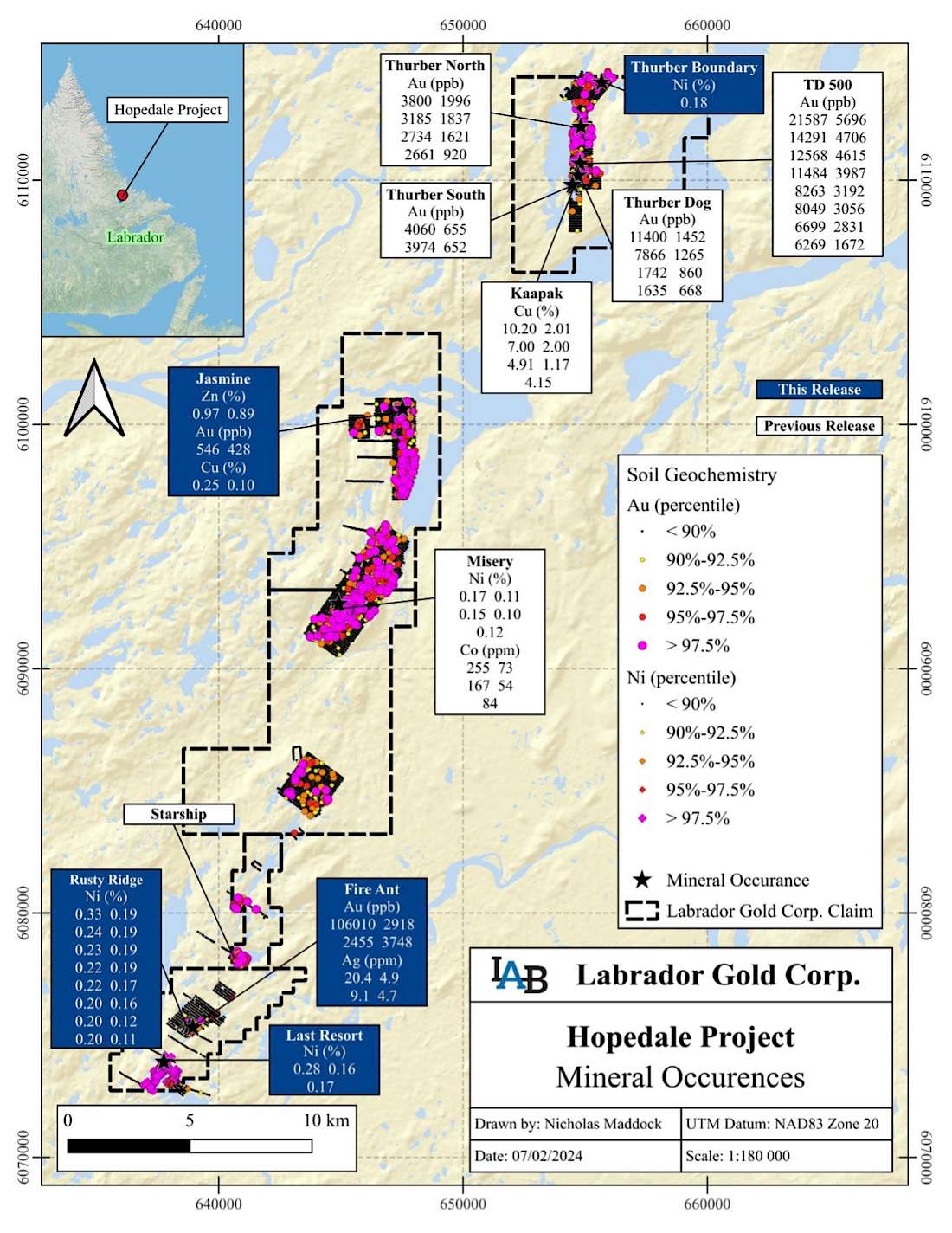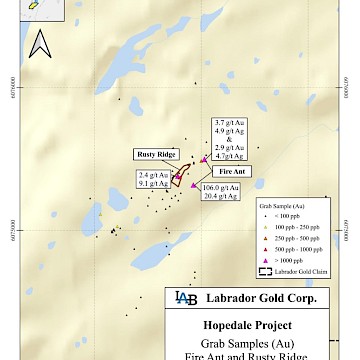Hopedale Project
Property
The Hopedale property comprises 998 claims in five licenses covering 249 square kilometres of the Florence Lake greenstone belt. Claims are just 30 km from the coastal community of Hopedale which has daily air service from Happy Valley-Goose Bay. The eastern portion of the Florence Lake greenstone belt lies along tidewater southwest of Hopedale.
Labrador Gold holds an option to earn 100% interest in the property, subject to cash payments, share issuance and a 2% net smelter return royalty.
Eight occurrences have been identified on the Hopedale project to date reflecting multiple mineralization styles including orogenic gold, magmatic Ni sulphide, copper-silver vein and Zn-rich volcanogenic massive sulphide.
Geology
The Hopedale property covers much of the Florence Lake greenstone (FLGB) belt that stretches over 43 km. The belt is typical of greenstone belts around the world but has been underexplored for gold by comparison.
The FLGB occurs in the Hopedale Block of the Nain Province in eastern Labrador. It trends northeast-southwest over a distance of approximately 65 km and lies adjacent to Ugjoktok Bay in the north. Rocks making up the belt consist mainly of mafic metavolcanics and ultramafic metavolcanics rocks with lesser felsic metavolcanic and metasedimentary rocks. The ultramafic rocks are typically altered to serpentine and/or talc-carbonate schist. Undeformed Proterozoic diabase and gabbro dykes cut all other lithologies in the area.
The rocks comprising the greenstone belt have been metamorphosed to greenschist to lower amphibolite facies, with a general increase in metamorphic grade towards the northeast. Foliation generally trends NE to ENE and dips steeply towards the NW and SE. Deformation is lithologically dependent with more competent units such as intrusive rocks, felsic volcanics and pyroxenite units less deformed than the less ultramafic volcanic rocks which are often intensely schistose.
Figure 1. Location of the nickel, copper, gold and zinc occurrences on the Hopedale Property.
Mineralization
Labrador Gold undertook the first systematic exploration for gold in the region with preliminary work completed in the fall of 2017. A total of 270 high-density lake sediment samples and 1,332 C-horizon soil samples were collected. Results indicated district scale gold (up to 0.93g/t)in soil samples over a 40 km strike length of the Florence Lake Greenstone Belt. Anomalies are most commonly associated with contacts between ultramafic metavolcanic rocks and surrounding rocks.
Follow up sampling in 2018 collected 10,594 soil samples taken over 12 grids. Results showed 34 samples over 0.1g/t Au with 5 over 1g/t Au.
Results highlighted three key areas of potential mineralization:
- Thurber Dog: 5 km strike length -gold values in soil up to 2.68g/t
- Misery: 1.8km strike length -gold values up to 2.1g/t
- Jasmine-Shirley: 1.1km strike length -gold values up to 0.36g/t
Work during 2022 found significant nickel anomalies in soil and rock at an area named Rusty Ridge. The anomalies occur in ultramafic rocks indicating potential for magmatic nickel style mineralization. A total of 14 grab samples of rock assayed over 0.1% Ni and included values up to 0.28% Ni while nickel values in soil up to 2,271ppm (0.23%) show a significant northeast-southwest trend extending the anomalous area over 550m. Approximately 1.2km south of Rusty Ridge, anomalous nickel in soil samples was outlined over a 1.6km strike length and is coincident with a significant magnetic high. Six of the samples assayed over 1,000ppm (0.1%) Ni with a high of 2,271ppm (0.23%) Ni. Limited rock sampling showed assays of 0.28%, 0.17% and 0.16% Ni in grab samples in this area named Last Resort
A 2023 exploration program identified a newly discovered mineralization named the Fire Ant occurrence in the southern claim block.. The occurrence is hosted in gossanous felsic volcanic rocks close to the contact with ultramafic volcanic rocks and has been traced over a strike length of approximately 200 metres.
To date, eight occurrences have been identified on the Hopedale project.
Maps & Figures
